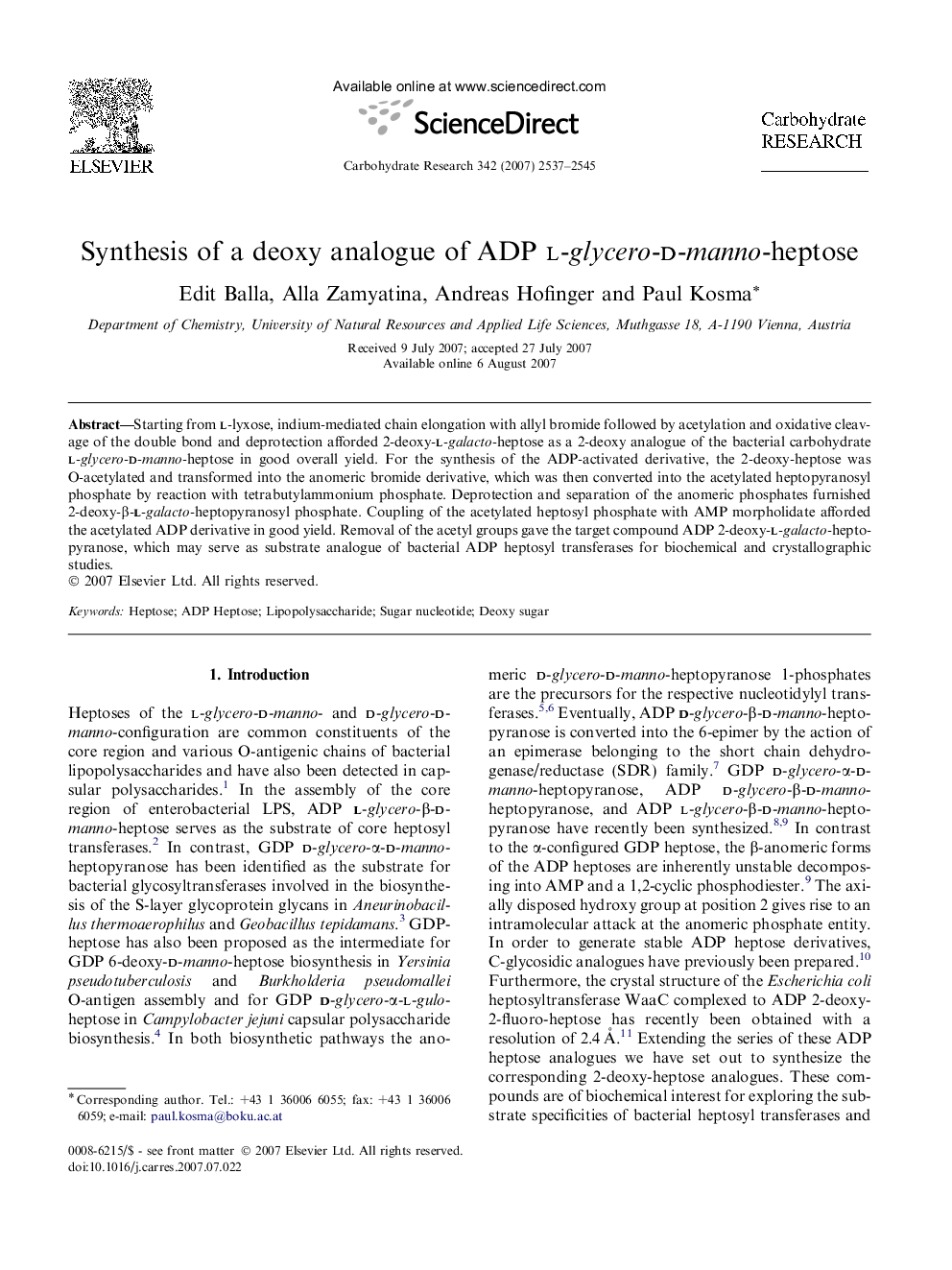| Article ID | Journal | Published Year | Pages | File Type |
|---|---|---|---|---|
| 1389106 | Carbohydrate Research | 2007 | 9 Pages |
Starting from l-lyxose, indium-mediated chain elongation with allyl bromide followed by acetylation and oxidative cleavage of the double bond and deprotection afforded 2-deoxy-l-galacto-heptose as a 2-deoxy analogue of the bacterial carbohydrate l-glycero-d-manno-heptose in good overall yield. For the synthesis of the ADP-activated derivative, the 2-deoxy-heptose was O-acetylated and transformed into the anomeric bromide derivative, which was then converted into the acetylated heptopyranosyl phosphate by reaction with tetrabutylammonium phosphate. Deprotection and separation of the anomeric phosphates furnished 2-deoxy-β-l-galacto-heptopyranosyl phosphate. Coupling of the acetylated heptosyl phosphate with AMP morpholidate afforded the acetylated ADP derivative in good yield. Removal of the acetyl groups gave the target compound ADP 2-deoxy-l-galacto-heptopyranose, which may serve as substrate analogue of bacterial ADP heptosyl transferases for biochemical and crystallographic studies.
Graphical abstractThe chemical synthesis of ADP 2-deoxy-l-galacto-heptose is described.Figure optionsDownload full-size imageDownload as PowerPoint slide
